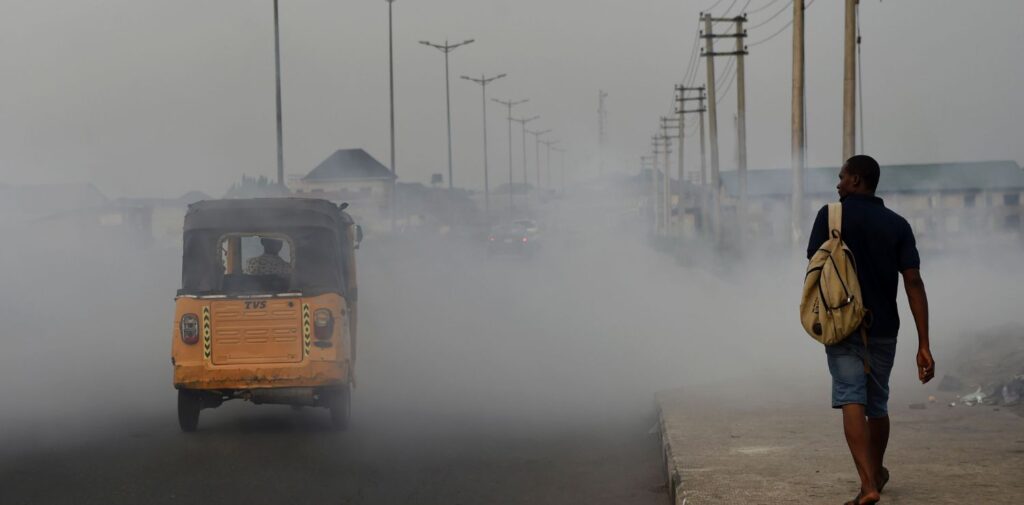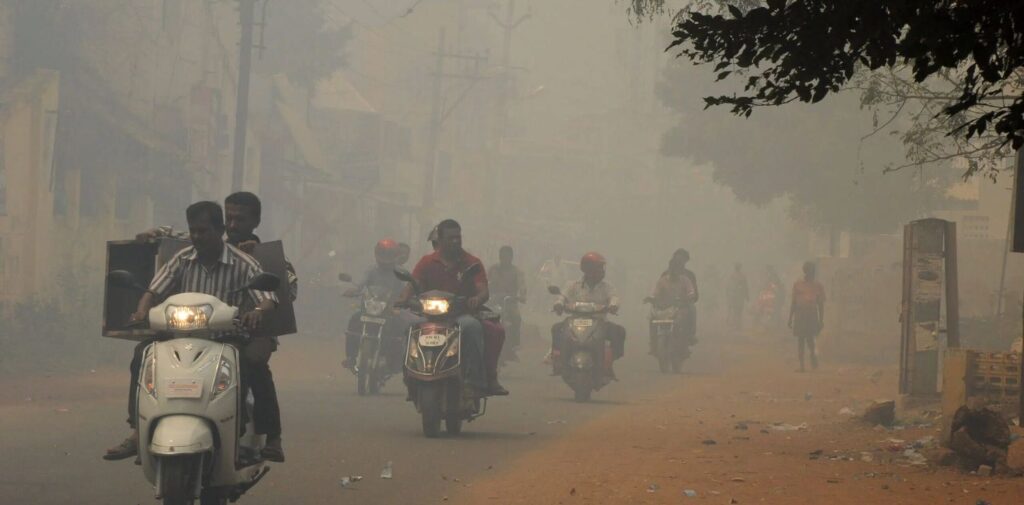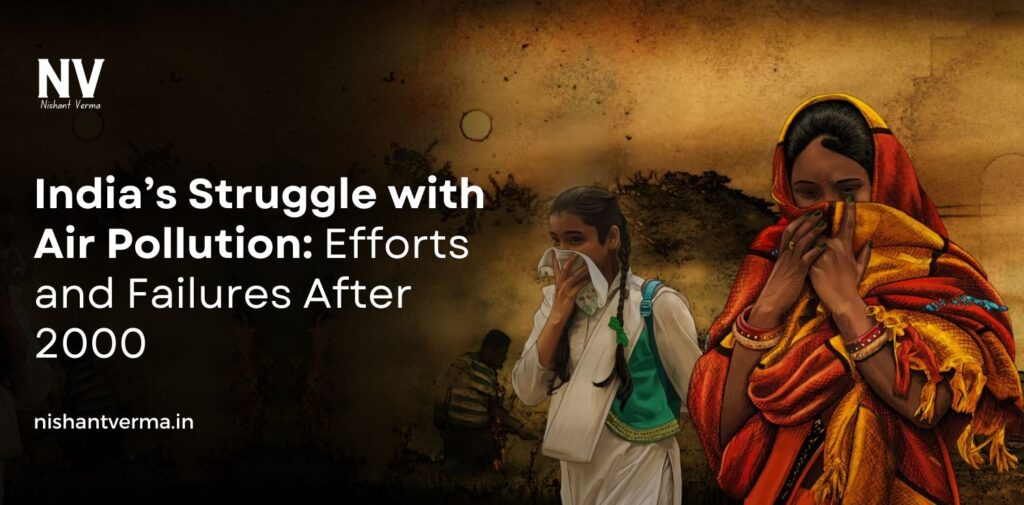India, one of the world’s fastest-growing economies, is also grappling with one of its most pressing environmental crises: air pollution. Over the years, India has seen an alarming rise in air pollution levels, particularly in major cities like Delhi, Mumbai, and Kolkata. Despite various efforts by the government and environmental groups, the problem has only worsened, impacting the health and well-being of millions of people. In this article, we will explore the effects of India Struggle with Air Pollution as well as the shortcomings in these efforts.
The Growing Threat of Air Pollution
India’s air pollution crisis has become one of the most severe in the world. According to the World Health Organization (WHO), 14 of the 20 most polluted cities in the world are located in India. Major pollutants include particulate matter (PM2.5 and PM10), nitrogen oxides (NOx), sulfur dioxide (SO2), and carbon monoxide (CO), which have been linked to various respiratory diseases, heart conditions, and premature deaths. These pollutants are emitted by vehicles, industries, and construction activities, and they remain trapped in the air due to weather conditions like temperature inversions.
One of the most alarming aspects of air pollution in India is its impact on public health. Studies have shown that over a million people die every year due to air pollution-related diseases, making it one of the leading causes of death in the country. The most vulnerable groups are children, the elderly, and people with pre-existing health conditions, who suffer the worst effects of toxic air.

Causes of Air Pollution in India
The causes of air pollution in India are varied and complex. Some of the major contributors include:
1. Vehicular Emissions
The rapid growth of urbanization and an increasing number of vehicles on the roads have led to a significant rise in air pollution. In cities like Delhi, the number of cars has increased exponentially in the past few decades. Most of these vehicles run on fossil fuels like petrol and diesel, which release harmful gases into the atmosphere. The lack of efficient public transport systems and the preference for private vehicles have only exacerbated the problem.
2. Industrial Emissions
Industries, particularly in the manufacturing and power sectors, are another major source of pollution. Many factories operate without adequate pollution control measures, releasing toxic gases and particulate matter into the air. Coal-fired power plants, in particular, are a major contributor to air pollution in India, as they release large amounts of carbon dioxide and other harmful chemicals.
3. Agricultural Practices
In rural areas, agricultural activities such as burning crop stubble contribute significantly to air pollution. Every year, during the post-harvest season, farmers burn large quantities of rice and wheat stubble to clear fields quickly for the next crop. This practice releases massive amounts of smoke, which drifts into urban areas, especially in northern India, and worsens air quality.
4. Construction Activities
With rapid urbanization, construction projects have been booming across the country. However, the construction sector often ignores environmental regulations, leading to the release of dust particles into the air. In cities like Delhi, this has become a significant contributor to air pollution, especially during the dry winter months when dust is more easily carried by the wind.
5. Seasonal Factors
India’s climatic conditions also play a role in worsening air pollution. During the winter months, the cooler weather and a phenomenon called “temperature inversion” cause pollutants to remain trapped close to the ground. This makes the air more polluted, and the effects are particularly severe in cities like Delhi, where the air quality can reach hazardous levels.

Government Initiatives to Tackle Air Pollution
Recognizing the threat posed by air pollution, the Indian government has taken several steps to address the issue. However, the effectiveness of these measures has been debated, and much more needs to be done.
1. The National Clean Air Programme (NCAP)
Launched in 2019, the NCAP aims to reduce particulate pollution levels by 20% to 30% by 2024. The program involves setting up monitoring stations, improving public awareness, and implementing measures to reduce pollution from industries, vehicles, and other sources. While this is a step in the right direction, critics argue that the targets are too modest and that the implementation has been slow.
2. BS-VI Standards
In 2020, India introduced the Bharat Stage VI (BS-VI) emission standards, which are stricter than the previous BS-IV standards. These new standards aim to reduce the amount of harmful pollutants emitted by vehicles. The government also encouraged the use of electric vehicles (EVs) as an alternative to petrol and diesel cars, with tax incentives and subsidies.
3. The Graded Response Action Plan (GRAP)
In Delhi, the government has implemented the Graded Response Action Plan (GRAP) to combat the worst periods of pollution, especially during the winter months. The GRAP includes measures such as restricting construction work, banning the burning of crop residue, and imposing stricter vehicle emission standards when air quality deteriorates. While these actions have had some positive impact, their short-term nature means that pollution levels often spike again once the measures are lifted.
4. Smog Towers and Air Purifiers
To combat the severe pollution in Delhi, the government has installed smog towers in various locations. These towers are designed to clean the air by filtering out harmful particles. Additionally, some areas have been equipped with air purifiers to help improve air quality, but the effectiveness of these towers remains limited, and they are not a long-term solution to the pollution problem.

Failures and Challenges
Despite the government’s efforts, there have been several challenges and failures in addressing the air pollution crisis in India.
1. Lack of Enforcement
One of the major shortcomings of India’s pollution control measures is the lack of effective enforcement. Many industries, vehicles, and construction projects continue to operate without adhering to environmental regulations. The enforcement of laws like the Environment Protection Act remains weak, and penalties for non-compliance are often not stringent enough to act as a deterrent.
2. Inconsistent Policies
Government policies on air pollution have often been inconsistent and reactive. Measures like the banning of vehicles or restrictions on construction activities are usually temporary and lifted once the pollution levels drop. There is little emphasis on long-term solutions like improving public transportation infrastructure or transitioning to renewable energy sources.
3. Public Awareness and Participation
Public awareness about the health risks of air pollution remains low in many parts of the country. While the government has launched awareness campaigns, the message has not reached everyone. Furthermore, individuals often do not take personal responsibility for reducing their carbon footprint, such as using public transportation or avoiding the burning of waste.
The Road Ahead: India Struggle with Air Pollution
India’s air pollution crisis is complex and requires a multi-pronged approach. The government must ensure stricter enforcement of existing laws, while also implementing long-term solutions like investing in renewable energy, improving public transportation, and promoting sustainable farming practices. Additionally, public awareness must be raised about the importance of air quality and the steps individuals can take to reduce their environmental impact.
India struggle with air pollution is far from over, but with continued efforts and a collective commitment to change, there is hope for cleaner air and a healthier future for all. The fight against air pollution will require the collaboration of the government, industries, and citizens to create a sustainable environment for future generations.




